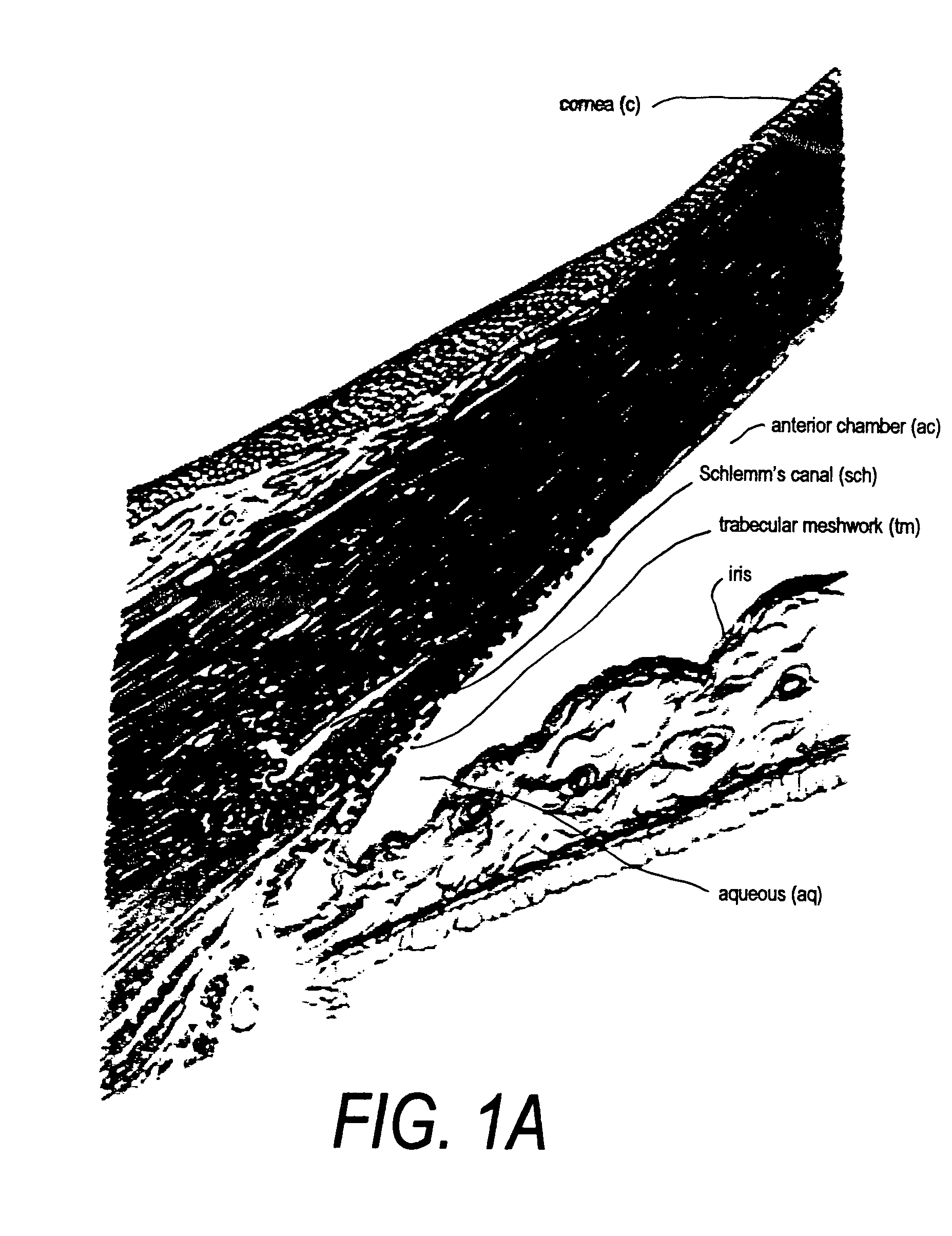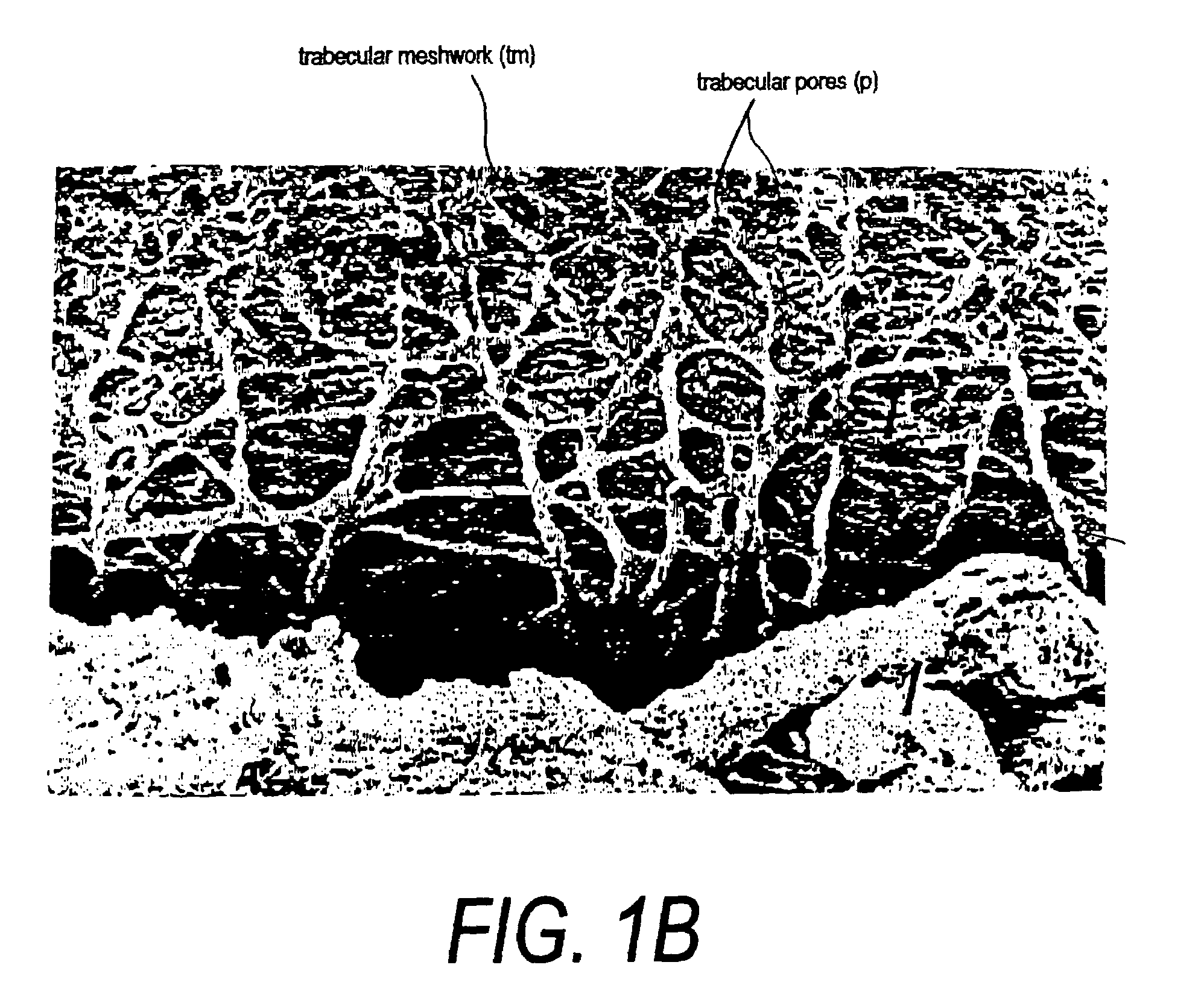Devices and techniques for treating glaucoma
a technology of glaucoma and devices, applied in the field of glaucoma therapy, can solve the problems of substantial mechanical energy delivered by art modalities directly to fluids, substantial damage to meshwork, and substantial thermal effects of melanosomes
- Summary
- Abstract
- Description
- Claims
- Application Information
AI Technical Summary
Benefits of technology
Problems solved by technology
Method used
Image
Examples
Embodiment Construction
I. Principles of Laser-Induced Microcavitation of Exogenous Chromophore Particles in Meshwork Spaces.
[0053]The principles relating to method of the invention can be understood from FIG. 4 wherein nanometric particles comprising an exogenous chromophore are introduced into the anterior chamber ac and thereafter transiently accumulate in clogged openings of the trabecular meshwork tm. The chromophore nanometric particles cnp (not to scale) thereafter are irradiated with coherent light to cause microcavitation in the fluid media within the pores p of the meshwork tm thereby delivering mechanical energy to the meshwork region incident to the laser beam.
[0054]As background, pulses of coherent light from a laser can deliver energy very rapidly to a targeted media. When the target carries, or comprises, a chromophore that is highly absorbing relative to the selected wavelength, such photoabsorption results in thermoelastic expansion of the target and a rise in internal pressures within the...
PUM
 Login to View More
Login to View More Abstract
Description
Claims
Application Information
 Login to View More
Login to View More - R&D
- Intellectual Property
- Life Sciences
- Materials
- Tech Scout
- Unparalleled Data Quality
- Higher Quality Content
- 60% Fewer Hallucinations
Browse by: Latest US Patents, China's latest patents, Technical Efficacy Thesaurus, Application Domain, Technology Topic, Popular Technical Reports.
© 2025 PatSnap. All rights reserved.Legal|Privacy policy|Modern Slavery Act Transparency Statement|Sitemap|About US| Contact US: help@patsnap.com



